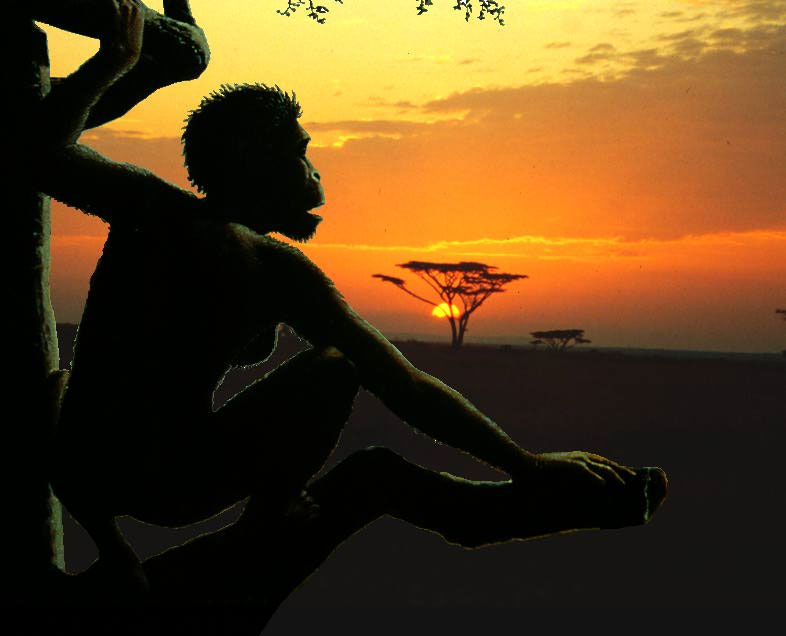Ancient people were able to climb as well as gibbons
A study published on October 25 in the journal "Science" (USA) showed that more than 3 million years ago, human ancestors stood up and moved on their forelegs but could still climb flexibly. like gibbon.
To get this conclusion, a group of scientists carefully studied and analyzed the shoulder blades that belonged to an ancient human bone fossil that was surprisingly unearthed.
This skeleton is a 3-year-old "girl" named "Selam" of the genus Australopithecus afarensis. The species of Australopithecus afarensis is known after scientists found the "Lucy" fossil, the first ancient person to be discovered and introduced to the public in 1974.
Researching the "Lucy" leg bone fossil, scientists determined the time when the ancient people left the tree to step down to the ground with a vertical walk over 3 million years ago. However, after the discovery of "Lucy" , anthropologists argued no less about this evolutionary stage. Is "Lucy" the mark of a person who has completely stood up or is just the beginning of an evolution from ape?

"Selam" gave a clearer answer. "Selam" was determined to live 3.3 million years ago. This fossil was found in 2000 in the area of Dikika in Ethiopia, an African country full of archaeological vestiges. For the next 11 years, Zeresenay Alemseged of the California Science Institute (USA) worked closely with Kenyan laboratory expert Christopher Kiariee to separate the shoulder blade from the skeleton and study it thoroughly.
Alemseged scientist stated: "Because the shoulder blade is as thin as paper, they rarely fossil. If it is, it is often broken. So, find both intact shoulder blades in one set. Fossil bones of an important species like Australopithecus afarensis, that is like winning a jackpot. "
The shoulder blade of "Selam" was coined by Alemseged and his colleagues, Midwestern University scientist David Green, in relation to prehistoric strains, with adult bone fossils of Australopithecus afarensis and with bone species. modern monkey and monkey. Since then, they have concluded that the ancients stopped their climbing behavior much later than the previous studies.
"When comparing the shoulder blades of" Selam "with the adult Australopithecus afarensis, it is clear that the type of development is more suitable for gibbons than humans. This is really an exciting period. "This species shows that they go straight on their legs, but we think they still maintain their adaptation to climbing. They climb out of the wild, seek food . " According to Green, it is still unclear when humans completely give up climbing.
Homo erectus, the ancestors of modern humans (about 1.9 million years ago), show that the skeleton has changed significantly, longer, more proportionally than that of modern humans. But from the period of "Lucy" (3.5 million years ago) to the ancestors of modern people is a long gap to be explored and studied further.
Alemseged scientist concludes: "The new finding further improves the picture of human evolution, confirming the important role of the Australopithecus afarensis species with representatives like Lucy and Selam. Although not completely humans, obviously Australopithecus afarensis on that evolutionary path. "
- New hypothesis toward migration of ancient people
- Prove human ancestors of Asian origin
- Vietnamese gibbons on the brink of extinction
- Very rare fossils of gibbons
- Robot robots help people with disabilities climb mountains
- Lam Dong rescues precious black gibbon
- New discovery about the evolution of language
- Having found an easy way to climb like a spider
- Dozens of relatives of people are about to disappear
- Detecting mysterious traces of gibbons
- Gibbons 'sing' to ward off enemies
- Discovered the first artwork of prehistoric people
 Discovered an ancient centipede fossil 99 million years old
Discovered an ancient centipede fossil 99 million years old Discovered bat-like dinosaurs in China
Discovered bat-like dinosaurs in China Discovered a 200-year-old bronze cannon of the coast
Discovered a 200-year-old bronze cannon of the coast Discover 305 million-year-old spider fossils
Discover 305 million-year-old spider fossils